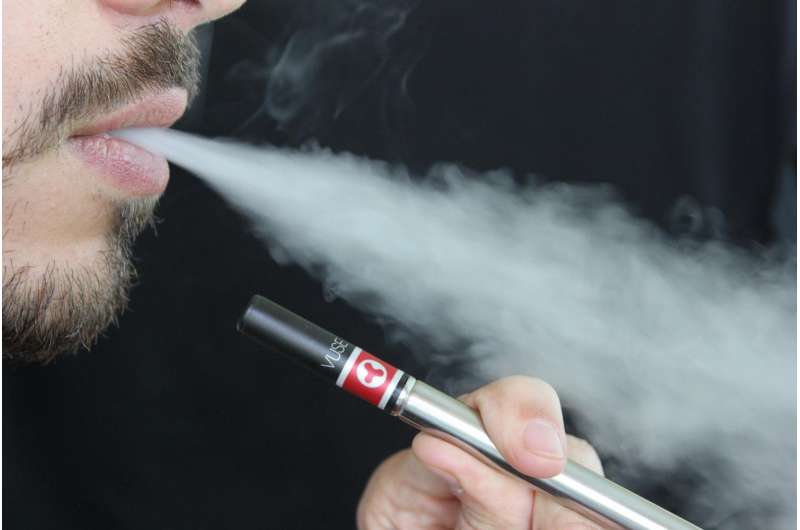Credit: CC0 Public Domain
Numerous surveys reveal a widespread view among the public—including smokers who want to quit—that e-cigarettes aren't a whole lot better for you than their combustible predecessors. An often fraught debate about how much we should regulate or encourage vaping can get clouded by contrary scientific studies and mixed messages about safety.
It goes all the way to the top. The World Health Organization has called for tighter regulation in the absence of stronger evidence that e-cigarettes are safe; meanwhile, Public Health England promotes vaping as a way to quit cigarettes and has said that the current best estimate is that it is 95 percent safer than smoking. What is a concerned smoker—or vaper—to make of it all?
The liquid (or e-liquid, or "juice," as enthusiasts call it) in e-cigarettes is a blend of the additives vegetable glycerin and propylene glycol, as well as nicotine and flavorings. An e-cigarette heats the liquid to create vapor, which delivers nicotine—the addictive substance in tobacco—via the lungs.
Last year, the National Academies of Sciences, Engineering, and Medicine in the US published a review of more than 800 scientific studies of the effects of e-cigarettes. It produced a list of conclusions categorized by their strength. There was "no available evidence," for example, to link e-cigarette use to heart disease, cancer or respiratory diseases.
Towards the higher end of the scale of certainty, there was "substantial evidence" that nicotine intake from e-cigarettes is comparable to that from cigarettes. Nicotine is highly addictive, but contrary to what many smokers believe, it is not classified as a carcinogen. The report found evidence that nicotine intake from e-cigarettes could cause short-term elevation of heart rate and blood pressure. From the research available, the report concluded that "there is insufficient evidence that e-cigarette use is associated with long-term changes in heart rate, blood pressure, and cardiac geometry and function," though more research is needed.
There was also substantial evidence from animal studies that some of the constituents of e-cigarette vapor, including formaldehyde, can cause damage to DNA, but it is as yet unclear whether the levels of exposure are high enough to cause problems in the long term.
The report did not consider diacetyl, a flavoring used in popcorn that has been found in e-cigarettes in one widely reported study, a substance linked to "popcorn lung," a serious condition observed in workers at a microwave popcorn factory. Diacetyl has been used, in small doses, in some flavors of e-liquids. No evidence of its harm in e-liquids has been found, but diacetyl is no longer permitted in e-juice sold in the EU.
Among the statements that the review of studies made with "conclusive" evidence were that most e-cigarette products contain potentially toxic substances and they carry other risks such as explosions caused by cheap batteries or bad modification by users. But ultimately, the review concluded, switching from smoking to vaping reduces exposure to numerous toxicants and carcinogens.
Those who are among the most cautious about the long-term effects of vaping accept that it's safer than smoking. Meanwhile, the biggest proponents of vaping as a way to quit cigarettes accept that more research is needed into its long-term effects. One thing they all agree: children should not vape, and nor should anyone who has never smoked or who would not otherwise be smoking.
"The only possible purpose for having nicotine products is to help smokers not die," says Robert West, director of tobacco studies at University College London.
Provided by Mosaic

























